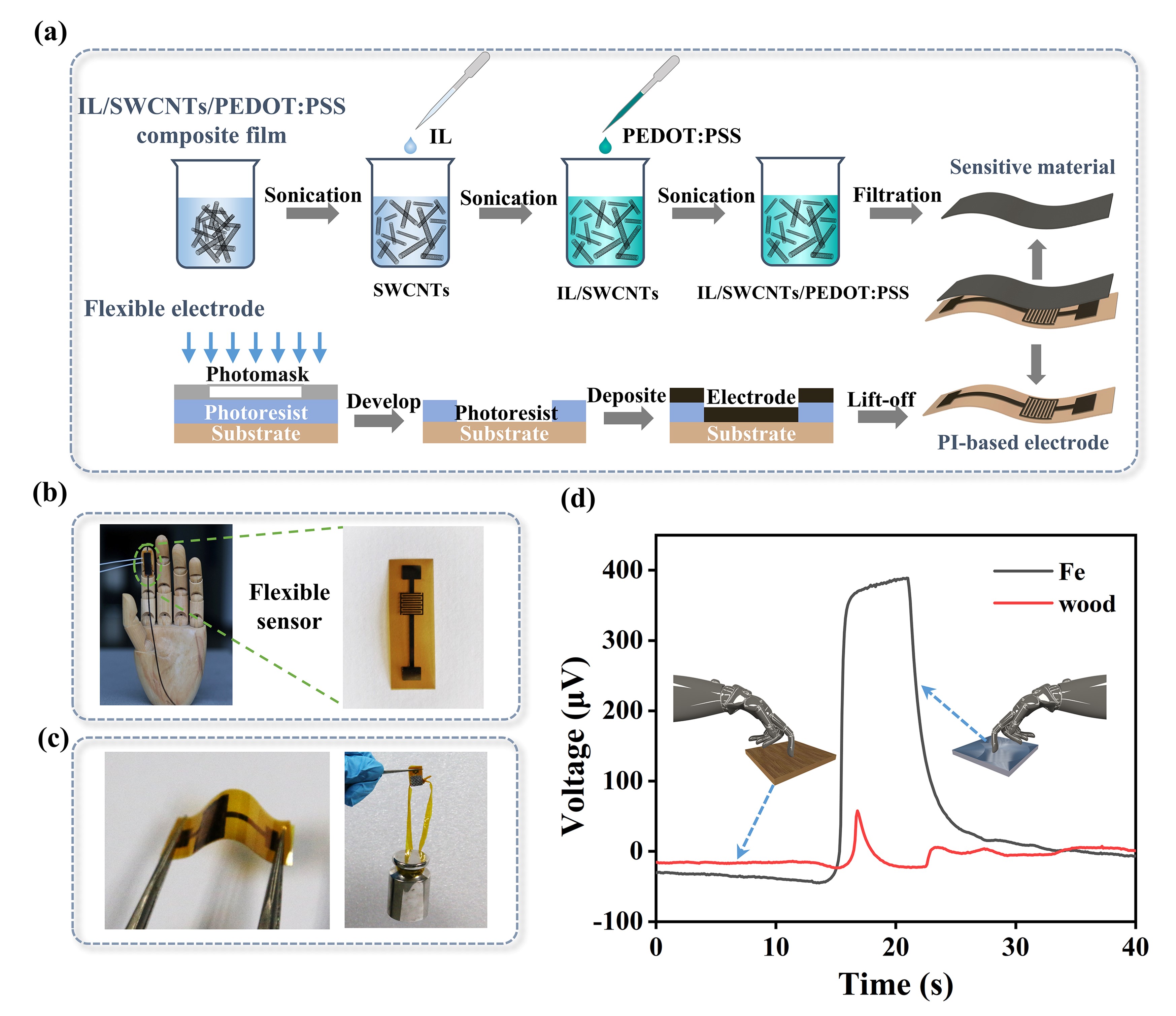News

- Address: 江苏省苏州市苏州工业园区若水路398号
- E-mail: tzhang2009@sinano.ac.cn
- TEL: 86-512-62872706
- FAX: 0512-62603079
- Website: http://nanosensor.sinano.ac.cn

Congratulations to our group's Master student, Shen Yuan, Master student, Yuchen Tian, PhD, Yue Li, and Associate Professor, Tie Li, for their paper "A Selectively Bimodal Flexible Sensor Based on IL/SWCNTs/PEDOT:PSS Nanocomposite for Material and Shape Recognition" being published in journal Journal of Materials Chemistry C
Abstract:
Flexible tactile sensors have attracted much attention since they can imitate the sensory function of human hand skin, showing a conceivable application in humanoid robot, human-machine interaction and so on. Unfortunately, the practical performance of these sensors is restricted by the drawback of inconvenient-multifunctional response, such as force and temperature-derived bimodal signals with high coupling that need to be decoupled via complex algorithms. Herein, in this study, a novel IL/SWCNTs/PEDOT:PSS nanocomposite film was fabricated and shows the Seebeck coefficient of 29.1 µV·K-1 and electrical conductivity of 8448 S·m-1, in which PEDOT:PSS forms a stable flexible matrix, SWCNTs provides a continuous conductive network, and the incorporation of IL plays the dual roles in promoting the dispersion uniformity of SWCNTs and the phase separation of PEDOT:PSS. Further, via the piezoresistive mechanism and thermoelectric output principle, this nanocomposite film derived dual-modal flexible tactile sensor was endowed with the comprehensive feature of pressure and temperature response behaviors without any mutual coupling manner, manifesting the skin-like functions of selective sensing capability. Finally, this flexible device is integrated into a humanoid hand for accurately distinguishing the materials and shapes of objects, demonstrating a recognition accuracy of over 98% via the aid of a machine-learning strategy. It can be believed that this study will inspire the development of next-generation biomimetic robots with tactile perception.





